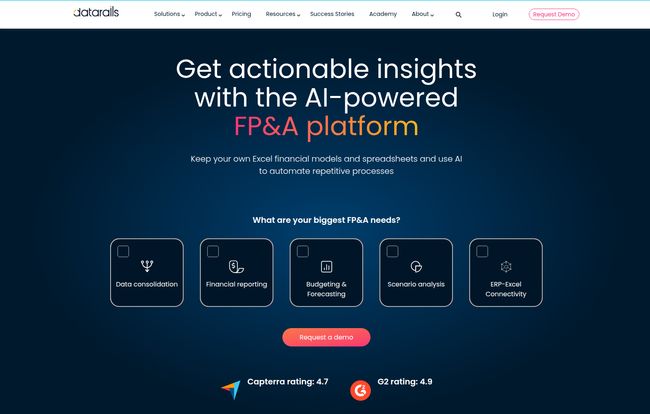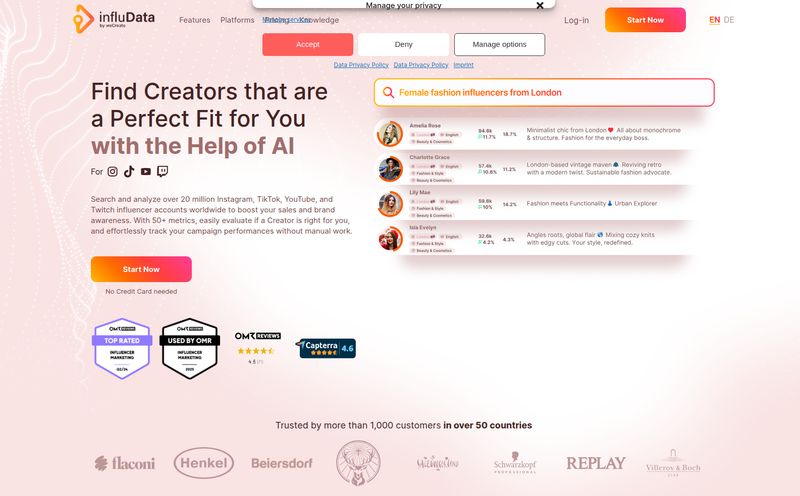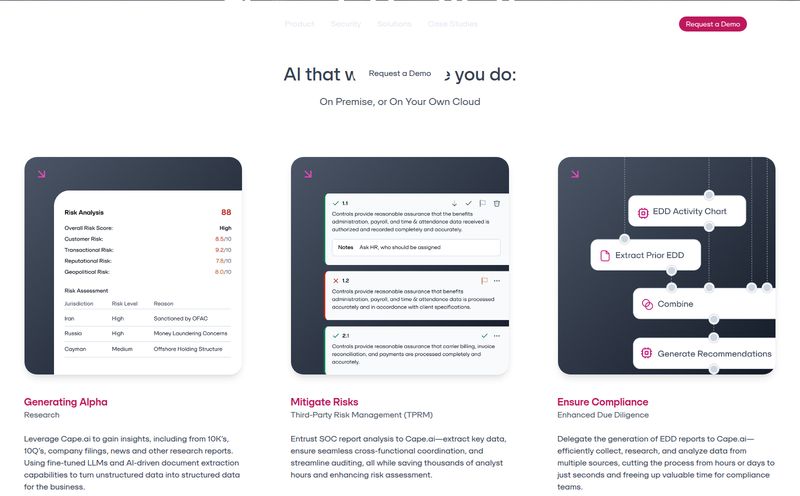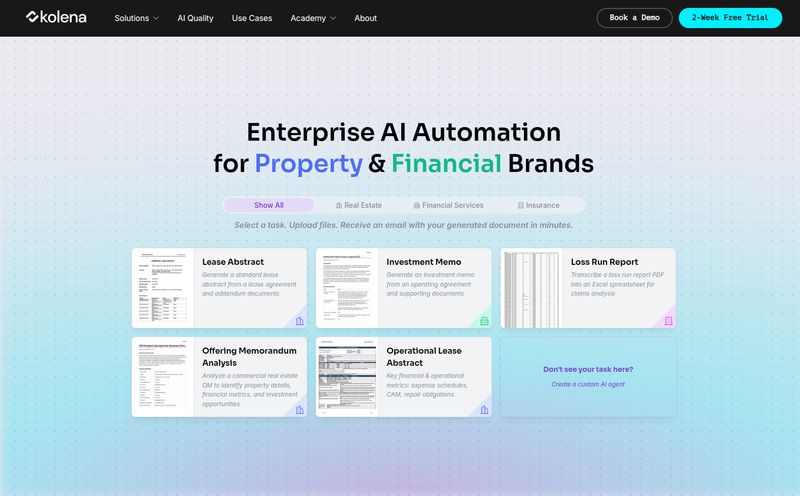You and me. If you’ve ever worked in finance, you know the feeling. It’s 9 PM, the office is quiet, and you’re staring at a spreadsheet with 47 tabs. You've got data from Salesforce, your ancient ERP system, and a CSV that the marketing team emailed you (with two columns mysteriously swapped). Your mission, should you choose to accept it, is to mash it all together into a coherent forecast for the board meeting tomorrow morning. Your eyes are burning, your VLOOKUPs are breaking, and you're pretty sure the file name "Monthly_Report_FINAL_v4_use_this_one.xlsx" is mocking you.
We’ve all been there. For years, the industry has been telling us the answer is to ditch Excel entirely. To move to some monolithic, all-in-one platform that promises the world but requires a six-month implementation and a complete overhaul of how your team works. I’ve always been skeptical of that approach. It ignores the fact that finance teams are built on Excel. It’s the devil we know, and frankly, it's incredibly powerful when you know how to use it.
So when I started hearing buzz about a platform called Datarails, my curiosity was piqued. Their claim? They aren’t here to kill Excel. They’re here to make it better. To put a turbocharger on it. To let you keep your models, your spreadsheets, your workflow... but automate the soul-crushing manual work. It sounded too good to be true. So, I decided to take a closer look.
So, What on Earth is Datarails, Really?
At its heart, Datarails is a Financial Planning and Analysis (FP&A) platform. That’s the official term. But what does that mean in plain English? Think of it like a smart, central hub for all your financial data. It doesn't ask you to rebuild your entire financial world from scratch. Instead, it acts as a powerful layer on top of what you already use—Microsoft Excel.
Imagine your current Excel models are like a classic, well-built car. You love how it handles, you know every quirk. Datarails is like dropping a modern, Formula 1 engine into that car. It also adds a GPS, a state-of-the-art sound system, and self-driving capabilities. The car is still familiar, but now it’s unbelievably powerful and efficient. It automates the painful process of data collection (the wrangling) and report generation so your team can spend its precious time on the important stuff: analysis, strategy, and finding insights that actually move the needle.

Visit Datarails
The Datarails Features That Genuinely Caught My Eye
Any platform can throw a list of features on a webpage. What I care about is what they actually do to make my life easier. Datarails has a few tricks up its sleeve that address some of the biggest headaches in finance.
Taming the Data Consolidation Beast
This is the big one. The main event. Most finance teams spend an absurd amount of time just gathering data. Pulling reports from the CRM, the accounting software, HR systems, operational databases... it’s a manual, error-prone mess. Datarails automates this completely. It connects directly to your various systems—be it NetSuite, Salesforce, QuickBooks, you name it—and pulls all that data into one place. What used to take days of copy-pasting and cleanup at the end of each month can now happen automatically. This isn’t just a time-saver; it’s a sanity-saver.
Budgeting and Forecasting Without the Tears
Ah, the annual budget cycle. That wonderful time of year filled with endless spreadsheet versions and frantic emails. Datarails brings structure to the chaos. It allows for a more collaborative budgeting process where different department heads can input their numbers into a structured system, which then flows up into the main financial model. It also makes scenario planning a breeze. You can easily model things like, “What happens to our cash flow if sales increase by 15% but our cost of goods goes up 5%?” Trying to do that accurately across dozens of linked spreadsheets is a recipe for disaster. Here, it’s a few clicks.
Meet Your New AI Assistant: The FP&A Genius
Okay, I'll admit, I'm a bit of a cynic when it comes to AI buzzwords. But this is pretty cool. Datarails has an integrated AI tool they call “FP&A Genius.” You can literally just ask it questions about your data in plain English. Instead of building a complex pivot table to figure out your top 10 customers by revenue in the last quarter, you can just... ask. "What was our travel T&E for the sales team in Q2 vs Q1?" It queries your own, consolidated data and gives you the answer. It’s like having a junior analyst on standby 24/7 who never makes mistakes or asks for a day off. This is a genuinely useful application of AI in a finance context.
The Elephant in the Room: Its Relationship with Excel
This is the most important thing to understand about Datarails, and frankly, its most brilliant feature. They lean into Excel. They embrace it. While competitors are shouting “Excel is dead!”, Datarails is saying, “No it isn't, you’re just using it wrong.”
This is huge. It means your team doesn't have to abandon the spreadsheets they've spent years, or even decades, perfecting. The institutional knowledge baked into those complex models doesn’t get thrown in the trash. The learning curve is gentler because the final output and modeling environment is still the familiar grid of cells and formulas. Their tagline says it all: "The flexibility of Excel. The power of Datarails." For once, a marketing slogan that actually feels true. Of course, this does mean that your team's existing Excel skills are still very relevant, some might even say required. This isn't a tool for people who've never seen a formula bar before.
So, Who Is This Really For?
Let's be clear, Datarails isn't for a one-person startup tracking petty cash. It's built for established finance teams in small to mid-market companies and even some enterprises. It's for the organization where the CFO is tired of getting different numbers from different departments. It’s for the FP&A manager who spends the last week of every month chasing data instead of analyzing it. And it's for the financial analyst who wants to do more meaningful work than just updating spreadsheets.
Looking at their case studies, they're serving a wide range of industries—from fast-growing tech companies and logistics firms to marketing agencies and healthcare providers. The common thread isn’t the industry; it’s the pain point. If your finance team is feeling the growing pains of scale and manual processes are starting to break, you’re their target audience.
The Not-So-Perfect Stuff (Let's Be Honest)
No tool is a silver bullet, and it wouldn't be a real review if I didn't point out the potential downsides. I've always believed in transparency here.
First, there's going to be a learning curve. Yes, it uses Excel, but Datarails is still a new piece of software. Setting up the data connections, learning the workflow, and getting the team onboarded will take time and effort. It’s an investment in process change.
Second, it's a premium, paid tool. This isn't a cheap plugin. It's a comprehensive platform, and it's priced accordingly. For a small business just starting out, it might be overkill. Which brings me to the next point…
Datarails Pricing: The Big Question Mark
You’ll notice if you go to their website that there isn't a pricing page with neat little boxes and monthly fees. Datarails uses a customized pricing model. You have to talk to their sales team and get a demo to get a quote.
Now, my personal preference is always for transparent pricing. I like to know what I’m getting into. But in the world of B2B SaaS for finance, this is pretty standard. The final price depends on so many factors: your company size, the number of users, the complexity of your data sources, the specific modules you need. A 50-person company has very different needs than a 500-person one. So, while it’s a bit annoying, it makes sense. Just be prepared that this is a significant investment in your finance tech stack, not a monthly credit card charge.
Final Verdict: Is Datarails the Right Move for Your Finance Team?
After spending time digging into Datarails, I get it. I really do. It’s not trying to be a futuristic, abstract platform that forces you to change everything. It's a pragmatic solution to a very real problem.
If your finance team is drowning in manual data collection and report preparation, and if the idea of abandoning Excel gives them nightmares, Datarails is probably one of the most compelling and logical solutions on the market today. It builds a bridge from the spreadsheet-heavy world of yesterday to the automated, AI-enhanced world of tomorrow, without making you tear down everything you've already built.
It’s a tool that respects the work and expertise of finance professionals. It might just be the thing that lets your team finally stop being data janitors and start being the strategic partners the business actually needs them to be.
Frequently Asked Questions
- What is Datarails used for?
- Datarails is primarily used for Financial Planning & Analysis (FP&A). This includes automating data consolidation from different systems, streamlining budgeting and forecasting, creating financial reports, and performing scenario analysis.
- Does Datarails replace Excel?
- No, and that's its biggest strength. Datarails integrates with and enhances Excel. Finance teams can continue using their existing spreadsheets and models, while Datarails automates the data collection and reporting layers on top.
- Is Datarails difficult to learn?
- There is a learning curve, as with any new software. However, because it's built around the familiar Excel interface, most finance professionals find it much easier to adopt than platforms that require starting from scratch.
- How much does Datarails cost?
- Datarails has custom pricing. You won't find a price list on their site. You need to contact their sales team for a demo and a quote based on your company's specific needs, like number of users and data integrations.
- Can Datarails connect to my company's software?
- Yes, it's designed to integrate with a wide range of business systems, including common ERPs (like NetSuite, SAP), CRMs (like Salesforce), accounting software (like QuickBooks), and HR systems.
- What is the Datarails FP&A Genius?
- It's an AI-powered tool within the platform that allows you to ask questions about your financial data using natural language. For example, you can type "Compare sales for Q1 vs Q2" and it will generate the answer from your data.
Reference and Sources
- The official Datarails website: www.datarails.com
- An insightful article from the AICPA on the challenges of modern FP&A: Top challenges for FP&A teams



